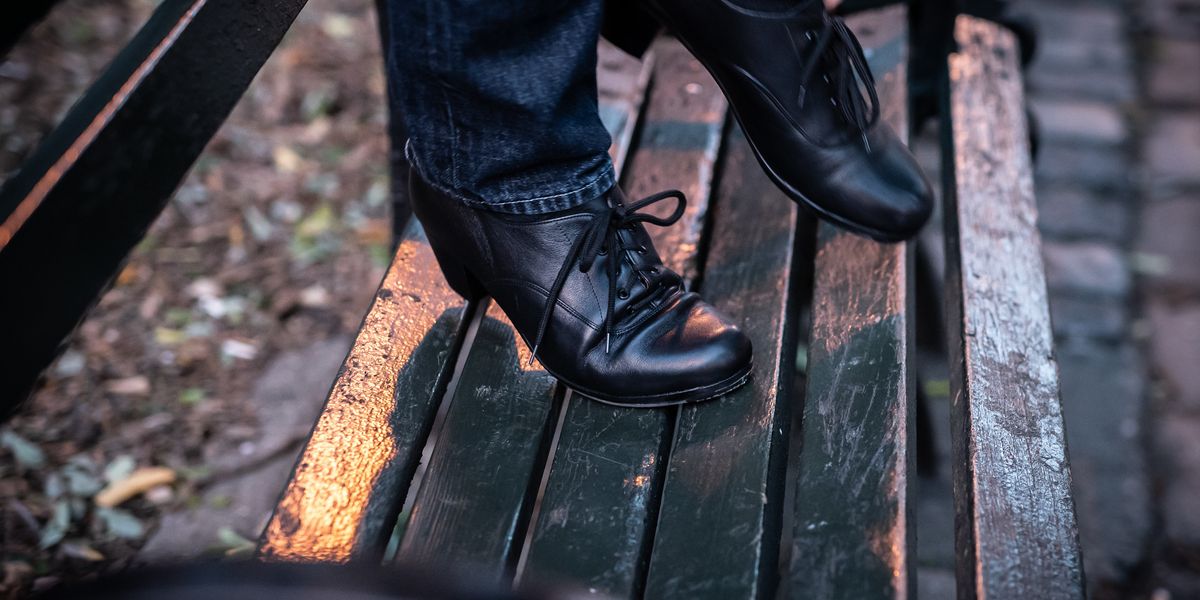For Percussive Dancers, Dancing at Home Is Easier Said Than Done
I have not worn my flamenco shoes since March 14. As I sit at my desk, day in and day out, they remain perched on a closet shelf, staring at me with grim disappointment. They join me in watching countless YouTube, Instagram and TikTok videos of dancers taking barre in their living rooms, or performing choreography in their kitchens. It feels like everyone in the dance world is playing, and I am watching their fun through a screen.
This experience, unfortunately, has been the grim reality for many percussive dancers around the country during the COVID-19 pandemic. Because many of our practices hinge on bodily sound-making and the use of hard-soled shoes, they can easily become a nuisance to neighbors and a vandal for polished wood floors.
As I started to think of remedies for my artistic confinement, I quickly realized that every idea seemed like another roadblock that most of my non-percussive dancer friends were not facing. What about my neighbors downstairs? Will their lights fall down? What if my stomps echo into the alley? Will I get a noise citation? Will drilling footwork on my practice board become my only rehearsal option for the months ahead?
So, like any resourceful millennial, I turned to my friends and their friends in percussive dance communities. On social media, I found an abundance of creativity. I saw Mary Baird, New York City-based flamenco dancer and co-founder (along with myself) of Al Margen Flamenco, dancing in her basement laundry room. I came across Brinda Guha, New York City-based kathak and contemporary Indian dancer, exploring the lyrical, non-sounding elements of her movement. The bells missing on her ankles made her no less dazzling to watch.
Tap dancers Maud and Chloe Arnold, producers of the upcoming Global Online Tap Festival, “haven’t even tried to be quiet.” Living on the first floor has certainly made this approach easier for them. But Maud also encourages dancers to chat with neighbors about setting up a schedule to allow time for practicing that won’t bother others, and to try to keep dancing like business as usual—whether that means a FaceTime “scatting tap jam” session, covering your shoes with socks or dancing on the front porch.
But for some percussive dancers, social distancing poses an opportunity to rethink their practice, and to explore ideas they wouldn’t have under normal circumstances.
For example, in addition to normal movement-based sessions, flamenco dancer and teacher Xianix Barrera is teaching her students about flamenco history, dance structure and costuming in her online classes, topics she wouldn’t typically cover in a traditional studio setting.
Los Angeles-based stepper and choreographer Jamal Josef is experimenting with his style by “putting more power behind his movement than in the percussive sound.”
Dancer and scholar Becky Hill is using these limitations to further explore her relationship to Appalachian clogging, flatfooting and buck dancing. She wonders how all this time spent in solo research will affect the many percussive forms that rely on collaboration with live musicians, and how an eventual reunion might be particularly generative.
I am a flamenco dancer still feeling limited by the present conditions of the pandemic. But I am also a Ph.D. student at UCLA researching percussive dance and the possibility of “percussivity” within all dance forms. From that perspective, I am all the more inspired by seeing and hearing these adaptive, boundary-pushing percussive dancers. We should all listen as they try to be heard.




